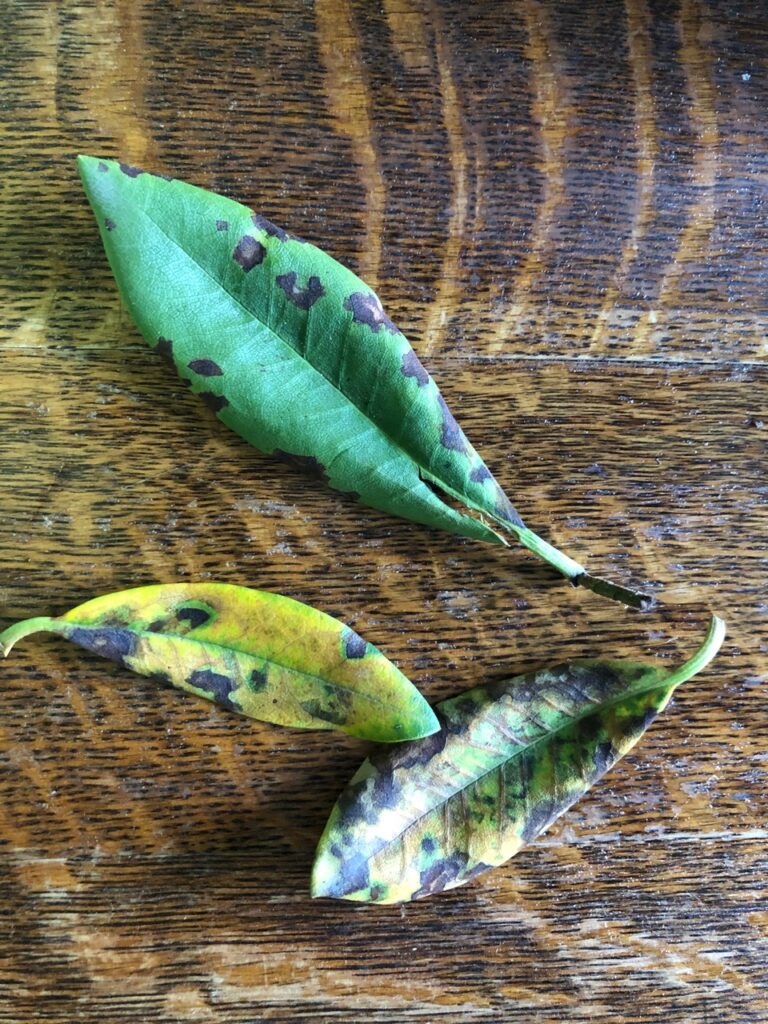
I live in The Annex in Toronto. My soil is amended clay. I planted a healthy young rhodo (a very common variety) in the spring in shade/part sun. Since then it has grown a foot or more (now about 2 feet) and has seemed to be thriving. But today I noticed six or more lower leaves were yellowing and marked with brown spots. It has been kept well watered during the summer months. Do you have any advice? Should I be worried?
There are a number of issues that can occur with ‘rhodos’, including failing leaves and growth, as a result of planting too deep and/or over watering,
Rhododendrons require air at the root level and have fragile surface feeding roots. They should be planted at the same level in your garden as they were in their nursery pots, maybe a bit higher. Do not bury the root ball under soil or heavy mulch.
Rhododendrons like to be moist, but not wet. Poor drainage, ‘wet feet’, can lead to iron deficiency that results in some yellowing (chlorosis) of leaves.
However, the nature of the spots on your plant leaves, with their black edges surrounding a lighter tan centre, indicates a fungal disease, Cercospora leaf spot, which tends to occur on the lowest leaves first. There is a good picture of infected leaves on the Clemson College website here: https://bit.ly/3SwXn8s
If you look very closely, you may see tiny ‘pimples’ in the centre of the spots, which are the fruiting bodies of the fungus.
Please note: Although you will see that the Clemson College site lists some fungicides, the products named are not allowed in Ontario and some are known carcinogens. Further, fungicide is best applied before the spots appear.
Instead, use good sanitary and cultural practices to control the problem on your rhodo.
Remove infected stems to just above a set of healthy green leaves where there is no sign of infection. Prune out entire stems if they are fully infected to their base. Don’t leave stubs: cut just above a leaf, stem, or right at a stem base. After each cut disinfect your pruners with rubbing alcohol.
Make sure you remove any fallen leaves, leaving no debris on the ground. When watering, water at root level, not splashing onto the leaves.
Next spring, you may want to forestall the problem by applying fungicide before bud break. Ask your garden centre for copper and/or sulfur compound suitable for rhododendrons specifically, and follow the instructions carefully.

